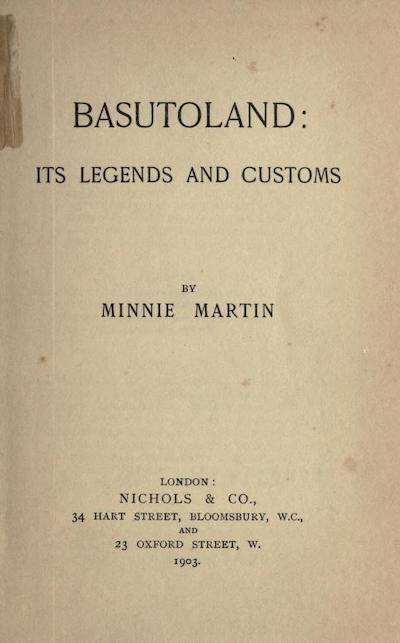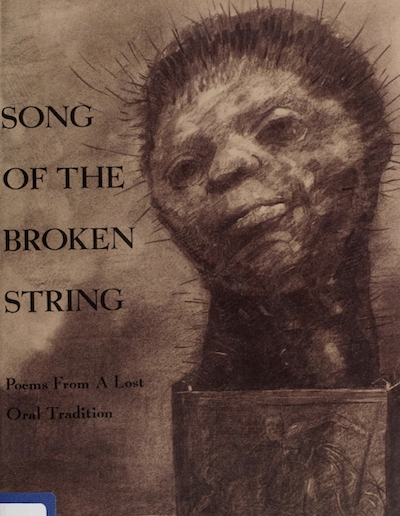Today begins the third week of my public domain book-writing project for November, and it's going really well! The list of stories is growing, and so is the audio playlist; Today's book supplied me with two great stories: Minnie Martin's Basutoland: Its Legends and Customs, published in 1903.
Minnie Martin was the wife of a colonial official who arrived in Basutoland (now Lesotho) in 1891, and she immediately set herself the task of learning the Sotho language; that project eventually led to this book. Roughly the first half is taken up with Basuto history and culture, with the other half containing myths and legends. In preparing the stories for publication, Martin chose a very old-fashioned English that does not in any way reflect the style of Sotho storytelling, but her work is still valuable for documenting the traditional stories that were in circulation in the late 19th century. You can find out more about the Sotho people of southern Africa at Wikipedia.
For the book project, I chose two stories about snake transformations: The Maid and Her Snake-Lover and Morongoe, The Snake. You'll find both the audio and the texts of the stories there.
If you read the two stories together, you can see the power of folktale variation which allows a storyteller to work with traditional story elements (like animal metamorphosis) in order to create new stories by combining those elements in different ways. These two snake stories are also a great example of African tales that share some elements in common with European story types (like "Beauty and the Beast"), while also being distinctively different.
I also wanted to share today a more modern example of an author turning traditional folklore material into a very different literary form: Song of the Broken String: Poems from a Lost Oral Tradition by Stephen Watson, published in 1991, and also available at the Internet Archive.
These poems are Watson's reworkings in modern English poetry of the stories told by San people in the 1870s as recorded by Wilhelm Bleek and his sister-in-law Lucy Lloyd; you can find out more about Bleek's work in this earlier post: Specimens of Bushman Folklore, and you can find out more about the San (Bushman) people at Wikipedia.
In the preface to his book, Watson provides an overview of San culture and the invasion of white colonists:
Dispossessed of the land over which they had moved as hunters and gatherers for centuries, hunted down by the white colonists as if they were wild animals, regarded as little more than vermin by surrounding black tribes, they were virtually extinct, victims of genocide, by the end of the nineteenth century.
You can find out more about the San people today and efforts at cultural preservation here: Foragers to First Peoples.
Minnie Martin, in retelling the Sotho stories, used a high-style literary English to appeal to her readers, but Watson's purposes here are something different: "I have worked to bring the words of the narrators to life once more, and in such a way that they might continue to speak to use who are alive in the last decade of the twentieth century." Watson provides this comparison between the source and his rendering by way of example:
Just as Bleek and Lloyd collected many different kinds of narratives from their San storytellers, including folktales, folk customs, personal anecdotes, and more, you will find that same variety here in Watson's collection of poetry.
So, thanks to the Internet Archive, you can explore the lost world of the San storytellers in the San and English texts written down by Bleek and Lloyd, and also in the form of these poetic recreations by Stephen Watson.
by Minnie Martin
by Stephen Watson







No comments:
Post a Comment
Comments are limited to Google accounts. You can also email me at laurakgibbs@gmail.com or find me at Twitter, @OnlineCrsLady.